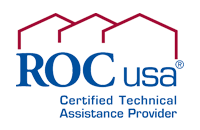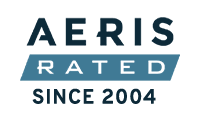
Can you afford NOT to fill vacant lots?
By Alan Blake
Homebuyers are attracted to communities where all the lots are occupied by well-maintained homes.
The best dining advice I ever got was, “Don’t go to a restaurant with an empty parking lot!” Word of mouth is the best advertising, and a full parking lot speaks loud and clear about what people think of a restaurant’s food, the service, and the cleanliness of the bathroom.
The same might be said for manufactured-home communities. Homebuyers are attracted to communities where all the lots are occupied by well-maintained homes. In today’s market, when so many need affordable housing, empty lots are an opportunity for ROCs (resident-owned communities).
Building a community
The first and most obvious is that filling empty lots provides financial stability for your cooperative. If your lot rent is $400 per month, an empty lot represents $4,800 per year in lost revenue. If you have two empty lots, that’s $9,600. If you have five, your community is losing out on $24,000 of additional revenue each year!
That kind of income can help keep rents low. It can also pay for a community center, a new septic system, fund your capital reserves account, or support other improvements in your community. All features that enhance the appeal of your neighborhood.

Bringing new homes into your community improves “curb appeal.” The fresh new look shouts, “Hey! This is a great place to live!” That positive energy is contagious and makes members proud of their community, which increases the value of all the homes in your community.
With new homes come new members. This can mean an influx of resources, energy, and enthusiasm to help run the cooperative business. ROCs depend on volunteers and, as they say, “Many hands make light work.”
Launching an infill initiative
The process of filling empty lots is called “Infill.” It includes everything from preparing a lot and installing a new home, to permitting and marketing the home. It’s a lot of work. Fortunately, help is available.
ROC-NH™ can help you evaluate whether you are prepared for an infill initiative. Do you have the support of members, a “champion” of the project who will act as a contact person, and a board ready to act?
Next, we can help you review your options. Market the lot to people who want to install their own home? Buy, install, and sell the home yourselves? Or work with a home dealer? Your circumstances will dictate which approach is best for your community.
We can guide you in discussions with local Realtors. Do they have experience selling manufactured (mobile) homes in ROCs? What prices are manufactured homes fetching in the area? How will they help you sell a home?
Then we can reach out to local contractors who can do site work, home installations, and utility connections. Remember, they often have experience and insight on how to get things done right—it’s what they do for a living.
Filling vacant lots is definitely worthwhile for any ROC. With today’s high demand for affordable housing, the work pays off with increased revenue, more members, and a more beautiful community that will have prospective members knocking on your door.
Thinking about an infill project at your co-op? Check out our training videos!
Alan Blake is a ROC-NH™ New Home Specialist.
ROC-NH™ is a program of the New Hampshire Community Loan Fund, Inc. and a ROC USA® Certified Technical Assistance Provider.
ROC-NH is a registered service mark of ROC USA, LLC.















